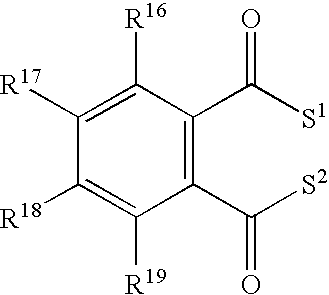Process for producing alpha-olefin polymerization catalyst
a technology of alpha-olefin and polymerization catalyst, which is applied in the direction of catalyst activation/preparation, physical/chemical process catalyst, organic compound/hydride/coordination complex catalyst, etc., can solve the problems of unsatisfactory disclosure of polymerization catalysts
- Summary
- Abstract
- Description
- Claims
- Application Information
AI Technical Summary
Benefits of technology
Problems solved by technology
Method used
Image
Examples
example 1
[0135]A 300-liter stainless steel autoclave equipped with an agitator was dried under reduced pressure, and then was purged with argon gas. The autoclave was cooled, and then evacuated. To a glass charger containing heptane, there were charged 2.6 mmol of triethylaluminum (organoaluminum compound), 0.52 mmol of cyclohexyltriethoxysilane (external electron donor), and 6.39 mg of a solid catalyst component prepared according to JP 2004-182981A, Example 1(2), in this order, thereby contacting them with one another in the glass charger to form a mixture containing a polymerization catalyst.
[0136]The mixture was charged to the autoclave all at once. Then, 780 g of liquefied propylene (α-olefin) and 5.1 NL of hydrogen were charged to the autoclave in this order. The autoclave was heated up to 70° C., thereby initiating polymerization.
[0137]After the polymerization for one hour, unreacted propylene remaining in the autoclave was purged to obtain a polymer. The polymer was dried at 60° C. f...
example 2
[0159]Example 1 was repeated except that (1) the amount of the solid catalyst component was changed to 5.44 mg, and (2) the amount of hydrogen charged was changed to 15.4 NL, thereby obtaining a propylene homopolymer powder. A yield of the propylene homopolymer per one gram of the solid catalyst component was 25,500 g-polymer / g-solid catalyst component (polymerization activity).
[0160]The propylene homopolymer was found to have 0.90% by weight of soluble parts in xylene at 20° C. (CXS); an intrinsic viscosity ([η]) of 0.75 dl / g; and an isotactic pentad fraction [mmmm] of 0.9829, the total of the homopolymer being 100% by weight. Results are summarized in Table 1.
example 3
[0161]Example 1 was repeated except that (1) the amount of the solid catalyst component was changed to 8.47 mg, and (2) the external electron donor was changed to 0.52 mmol of cyclopentyltriethoxysilane, thereby obtaining a propylene homopolymer powder. A yield of the propylene homopolymer per one gram of the solid catalyst component was 28,700 g-polymer / g-solid catalyst component (polymerization activity).
[0162]The propylene homopolymer was found to have 0.72% by weight of soluble parts in xylene at 20° C. (CXS); an intrinsic viscosity ([η]) of 1.10 dl / g; and an isotactic pentad fraction [mmmm] of 0.9805, the total of the homopolymer being 100% by weight. Results are summarized in Table 1.
PUM
| Property | Measurement | Unit |
|---|---|---|
| molecular weight | aaaaa | aaaaa |
| rigidity | aaaaa | aaaaa |
Abstract
Description
Claims
Application Information
 Login to View More
Login to View More - R&D
- Intellectual Property
- Life Sciences
- Materials
- Tech Scout
- Unparalleled Data Quality
- Higher Quality Content
- 60% Fewer Hallucinations
Browse by: Latest US Patents, China's latest patents, Technical Efficacy Thesaurus, Application Domain, Technology Topic, Popular Technical Reports.
© 2025 PatSnap. All rights reserved.Legal|Privacy policy|Modern Slavery Act Transparency Statement|Sitemap|About US| Contact US: help@patsnap.com



